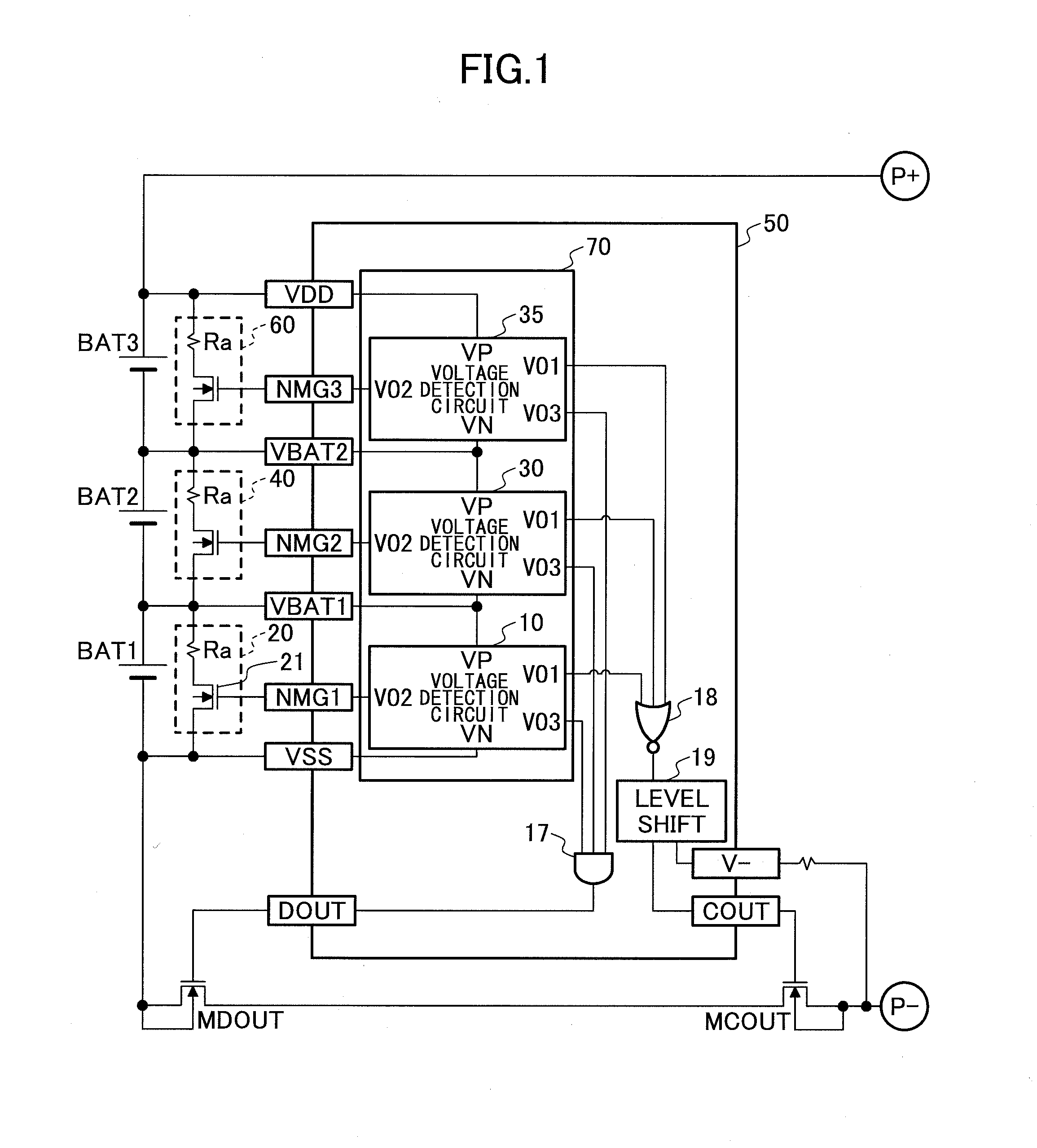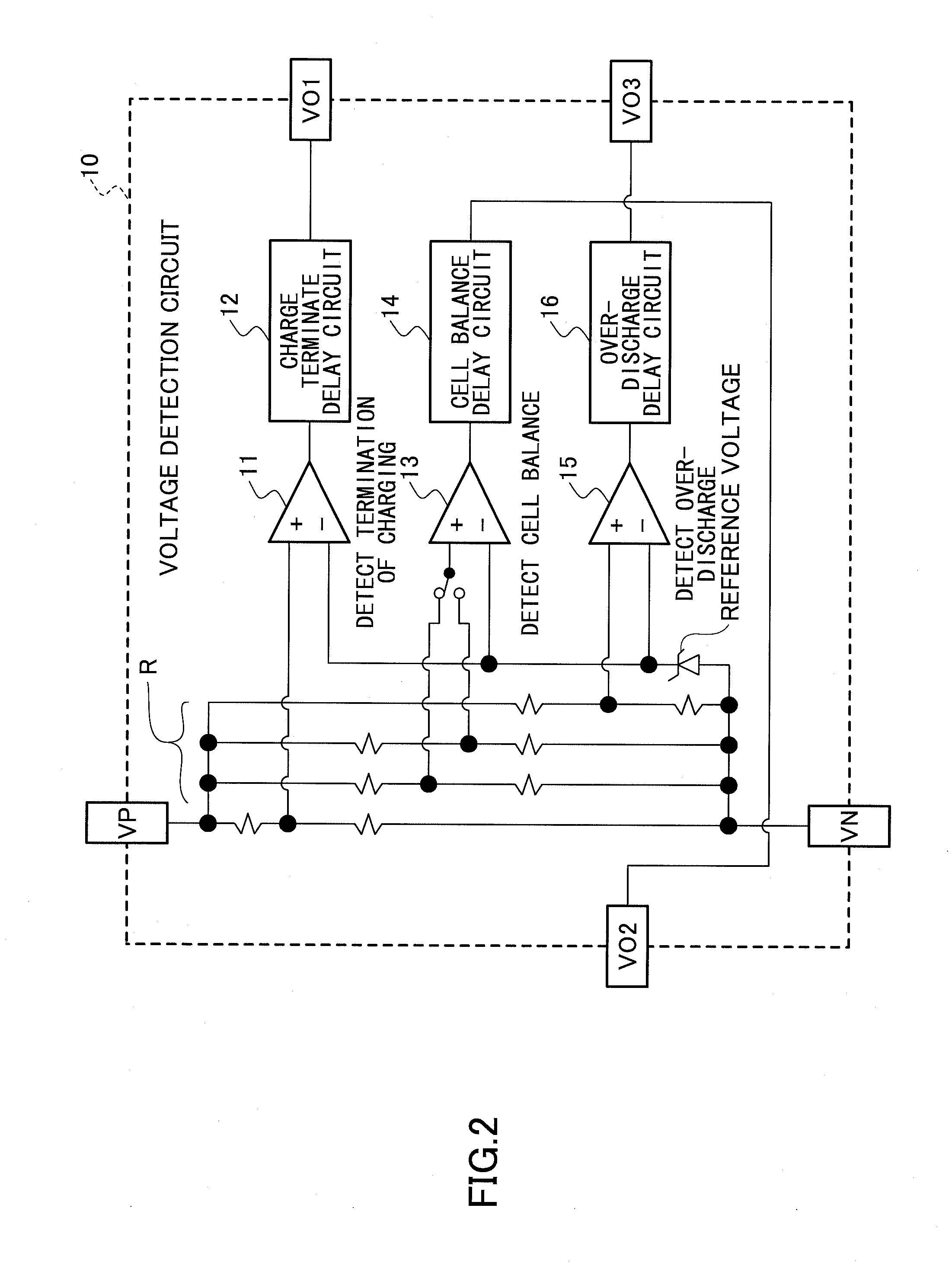Charge-discharge control circuit, semiconductor integrated circuit, method of controlling charging and discharging, and charging and discharging control program
- Summary
- Abstract
- Description
- Claims
- Application Information
AI Technical Summary
Benefits of technology
Problems solved by technology
Method used
Image
Examples
first embodiment
[0105]The first embodiment is described with reference to drawings. FIG. 3 is a diagram for explaining a charge-discharge control circuit of the first embodiment.
[0106]A charge-discharge control circuit 300 of the embodiment is connected between plural cells which are connected in series and a load, and controls charging and discharging of the plural cells. The charge-discharge control circuit 300 of the embodiment controls charging and discharging of the plural cells by controlling ON / OFF of a transistor for controlling charging MCOUT and a transistor for controlling discharging MDOUT connected in series between an anode side of the plural cells and an anode side of the load.
[0107]The charge-discharge control circuit 300 of the embodiment includes a voltage detection circuit 100, bypass circuits 120, 140 and 160, an AND circuit 210, a NOR circuit 220, an INV circuit 221, and a level shift circuit 230.
[0108]The voltage detection circuit 100 includes plural voltage detection circuits...
second embodiment
[0152]The second embodiment is described with reference to drawings. In the second embodiment, detection whether the cells reach the cell balance detection voltage is prevented except for the cell that reaches the cell balance detection voltage first.
[0153]In this embodiment, as the bypass circuit connected to the cell which has reached the cell balance detection voltage first is switched on in the next charging operation to reduce the charge current, it can be suppressed that the same cell continuously reaches the cell balance detection voltage first. Further in this embodiment, as the detection whether the cells, other than the cell which reaches the cell balance detection voltage first, reach the cell balance detection voltage is prevented, the bypass current only flows through one of the bypass circuits in the charging operation. Therefore, the current consumed as the bypass current can be reduced.
[0154]A charge-discharge control circuit 300A of the embodiment is explained in th...
third embodiment
[0186]The third embodiment is described with reference to drawings. In the third embodiment, a point where a single charge-discharge control circuit controls charging and discharging of a single cell is different from the second embodiment. In the following explanation of the embodiment, only the different points from the second embodiment are explained.
[0187]A charge-discharge control circuit 300B of the embodiment is explained with reference to FIG. 13. The charge-discharge control circuit 300B of the embodiment controls charging and discharging of a single cell. FIG. 13 is a diagram for explaining the charge-discharge control circuit of the third embodiment.
[0188]The charge-discharge control circuit 300B of the embodiment includes a bypass circuit 31, a voltage detection circuit 400, AND circuits 311 and 318, a NOR circuit 314, an OR circuit 319, inverters 312, 315 and 317, a memory circuit 310, rising edge generators 330 and 350, falling edge generators 340 and 360, and a logic ...
PUM
 Login to View More
Login to View More Abstract
Description
Claims
Application Information
 Login to View More
Login to View More - R&D
- Intellectual Property
- Life Sciences
- Materials
- Tech Scout
- Unparalleled Data Quality
- Higher Quality Content
- 60% Fewer Hallucinations
Browse by: Latest US Patents, China's latest patents, Technical Efficacy Thesaurus, Application Domain, Technology Topic, Popular Technical Reports.
© 2025 PatSnap. All rights reserved.Legal|Privacy policy|Modern Slavery Act Transparency Statement|Sitemap|About US| Contact US: help@patsnap.com



